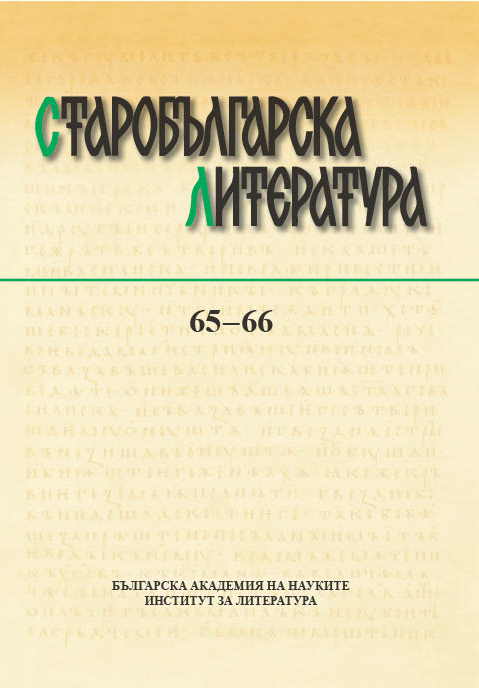Южнославянските наследници на търновската версия на Служебния миней от XIII век
South Slavic Successors to the Tarnovo Version of the Office Menaion of the Thirteenth Century
Author(s): Mariya YovchevaSubject(s): Christian Theology and Religion, History, Language and Literature Studies, Cultural history, Studies of Literature, Middle Ages, Theology and Religion, Philology
Published by: Институт за литература - БАН
Keywords: Office Menaion; Tarnovo version of the Office Menaion; transmission of the hymnographic texts; South Slavic Menaia manuscripts; ecclesiastical feasts and commemorations
Summary/Abstract: This article examines nine South Slavic manuscripts originating from the Tarnovo version of the Menaion, as the earliest among them are the two thirteenth-century codices of the copyist Dobrian (ОGNB 32 + 24.4.12 (Srezn. 59) of the Library of the Russian Academy of Sciences and ОGNB 33 + GIM Uvar. 1176-4°). Arguments for their relationship are some identification markers from the calendar and the contents of the offices. The indicators specific to this family are given primary importance in the examination of the manuscripts, but others are also applied, based on the opposition new-redaction / old-redaction (i.e., menaia structured according to the old Studite typikon and composed before the fourteenth century / menaia structured according to the Jerusalem typikon and composed mainly during and after the fourteenth century). Twenty-three menaia manuscripts and four early printed books (Greek and Church Slavonic) are used as comparisons. The data obtained lead to several conclusions: (1) the Office Menaion, formed during the thirteenth century in the Bulgarian capital, is non-homogeneous since it contains both unique and old- and new-redaction specificities; (2) although related to the fading Studite liturgical practice, this version was actively used and modified in a Bulgarian and Serbian environment until the seventeenth century. In the fourteenth century it was developed, in connection with the newly introduced Neo-Sabaitic (or Jerusalem) typikon, by adding new hymns, making the compositions more complex, standardizing and updating the calendar, sometimes even by commemorations of the Studite type; (3) the three main levels – calendar, contents, and structure – show an unequal degree of redactor intervention in coordinating the Office Menaion with the new liturgical regulations; (4) not only the protograph but also all subsequent copies are of a hybrid type. This article presents arguments of a diverse nature for the localization of the earliest Bulgarian sources, i.e., the Dobrian codices and menaia of the fourteenth century (No. 19 of the Krka Monastery, No. 33 of the Cetinje Monastery, Zograph 115, Paris. Slav. 23): (1) the area of original copying and distribution; (2) the focus on the feasts of the Theotokos and the registration of a unique commemoration, Consecration of the Church of the Theotokos on 22 August, in ОGNB 33; (3) two commemorations confined only to this family – St Philothea Temnishka on 28 May and St John of Rila (on 18 August, with the canon in Tone Two), which are not supported by other old-redaction liturgical books. The hypothesis is advanced that the place of origin of the Tarnovo “new menaion” and of part of the Bulgarian copies could be the Monastery of St. Bogoroditsa Temnishka.
Journal: Старобългарска литература
- Issue Year: 2022
- Issue No: 65-66
- Page Range: 152-183
- Page Count: 32
- Language: Bulgarian
- Content File-PDF

